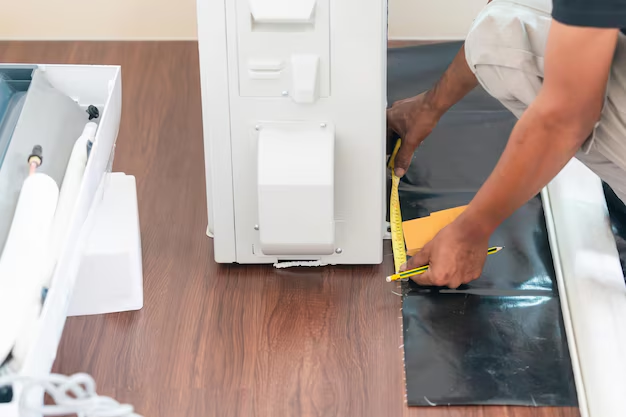Tackling Freon Leaks in Your Refrigerator: What You Need to Know
Does your refrigerator seem warmer than usual, or perhaps you’re hearing hissing sounds that just weren't there before? Freon leaks could be the culprit, affecting your refrigerator’s efficiency and potentially leading to further issues. Learning how to address such a problem can save you from the inconvenience and cost of a malfunctioning fridge. Here's a detailed guide to understanding, identifying, and addressing freon leaks in your refrigerator.
🌡️ Recognizing the Signs of a Freon Leak
Before diving into solutions, it’s crucial to spot the warning signs that your refrigerator might be suffering from a freon leak. Common signs include:
Increased Temperature: If your fridge isn’t as cool as it used to be, it might be due to a freon leak.
Hissing Sounds: Freon leaks may cause a hissing noise as the refrigerant escapes from the coils.
Oil Residue: Leaking freon often brings oil along with it, which may result in oil spots under or around your refrigerator.
Longer Cooling Cycles: A refrigerator working harder and longer to achieve its cooling effect can be an indication of a problem.
Unusual Odor: Although freon itself is odorless, the oils associated with it can produce a chemical smell.
Identifying these symptoms early can make the repair process easier and prevent further damage.
🔧 Understanding the Cause of Freon Leaks
Freon is a type of refrigerant crucial for the cooling process in refrigerators. It cycles through the evaporator and condenser coils to transfer heat and keep your fridge cool. Common causes of freon leaks include:
Corroded Coils: Over time, coils can corrode, leading to tiny holes from which freon can escape.
Physical Damage: Any damage to the coils or the compressor could lead to leaks.
Improper Maintenance: Without regular cleaning and maintenance, components like coils can become compromised.
Understanding the cause helps in preventing future leaks and maintaining the efficiency of your refrigerator.
🛠️ Steps to Fix a Freon Leak in Your Refrigerator
Fixing a freon leak is a task that requires careful attention to safety and detail. Here’s a step-by-step approach to dealing with a potential leak:
1. Safety First
- Power Off: Always unplug the refrigerator before beginning any repairs to avoid electric shocks.
- Ventilation: Ensure the area is well-ventilated. While freon is generally low-risk, proper ventilation is always a good practice.
- Protective Gear: Use gloves and safety goggles to protect against accidental contact with refrigerants and oils.
2. Locating the Leak
- Visual Inspection: Look for oil stains or areas with noticeable corrosion on the coils.
- Leak Detection Kit: Use a freon leak detector or soap bubble solution to pinpoint the exact location of the leak.
3. Fixing the Leak
- Small Leaks: If the leak is minor, sealing agents or repair kits available from hardware stores can temporarily resolve the issue.
- Replacement: In cases of significant damage, replacing the damaged coils or compressor might be necessary.
4. Refilling Freon
- Professional Help Recommended: Filling freon requires specialized equipment and training. It’s often best to contact a professional for this step.
5. Testing and Monitoring
- Power On and Test: After repairs, plug the refrigerator back in and observe its performance. Monitor for hissing sounds or temperature inconsistencies.
📋 Preventive Measures to Avoid Future Leaks
Minimizing the risk of freon leaks involves maintaining your refrigerator’s health:
Regular Maintenance
- Clean Coils: Dust and debris can cause coils to overheat, so regular cleaning is crucial.
- Check for Damage: Periodically inspect for any signs of corrosion or physical damage.
Proper Use
Avoid Overloading: Overfilling your fridge can strain the cooling system, leading to potential damage over time.
Balanced Temperature Setting: Keep your refrigerator at a steady temperature to ensure it runs efficiently and minimize stress on the components.
Professional Servicing
- Annual Check-Ups: Consider an annual professional inspection to catch potential problems early.
🔑 Key Takeaways: Freon Leak Repair
Here’s a quick summary of dealing with freon leaks, for those who prefer a visual and skimmable format:
- 👂 Watch for Signs: Unusual sounds, odors, or temperature changes.
- 🔍 Locate and Identify: Use inspection tools to find the source of the leak.
- 🛡️ Safety Above All: Always prioritize safety and professional help for handling refrigerants.
- 🚫 Prevent Future Issues: Regular maintenance and care can help avoid leaks.
🤔 Final Thoughts
Addressing freon leaks promptly can save you from costly repairs and extend the life of your refrigerator. Armed with the understanding of how to detect, assess, and, in some cases, fix these leaks, you can ensure your appliance runs smoothly for years to come. Always remember, when in doubt, it's best to consult a professional to avoid further issues and ensure safety.
With the right steps, your refrigerator can serve as a reliable partner in your kitchen for the foreseeable future. Keep it well-maintained, and it will continue to support your daily needs without hiccups.
